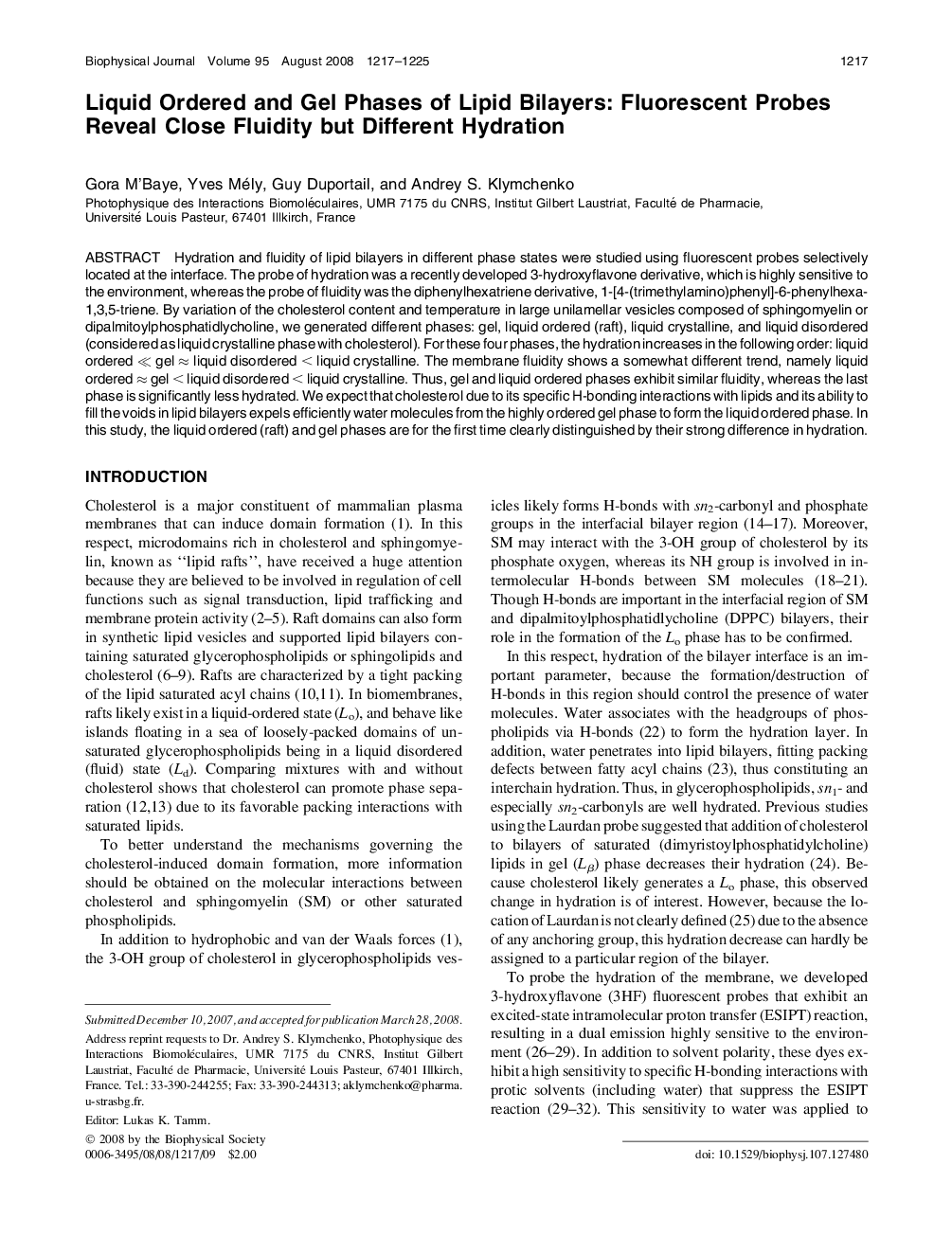| Article ID | Journal | Published Year | Pages | File Type |
|---|---|---|---|---|
| 1954902 | Biophysical Journal | 2008 | 9 Pages |
Hydration and fluidity of lipid bilayers in different phase states were studied using fluorescent probes selectively located at the interface. The probe of hydration was a recently developed 3-hydroxyflavone derivative, which is highly sensitive to the environment, whereas the probe of fluidity was the diphenylhexatriene derivative, 1-[4-(trimethylamino)phenyl]-6-phenylhexa-1,3,5-triene. By variation of the cholesterol content and temperature in large unilamellar vesicles composed of sphingomyelin or dipalmitoylphosphatidlycholine, we generated different phases: gel, liquid ordered (raft), liquid crystalline, and liquid disordered (considered as liquid crystalline phase with cholesterol). For these four phases, the hydration increases in the following order: liquid ordered ≪ gel ≈ liquid disordered < liquid crystalline. The membrane fluidity shows a somewhat different trend, namely liquid ordered ≈ gel < liquid disordered < liquid crystalline. Thus, gel and liquid ordered phases exhibit similar fluidity, whereas the last phase is significantly less hydrated. We expect that cholesterol due to its specific H-bonding interactions with lipids and its ability to fill the voids in lipid bilayers expels efficiently water molecules from the highly ordered gel phase to form the liquid ordered phase. In this study, the liquid ordered (raft) and gel phases are for the first time clearly distinguished by their strong difference in hydration.
